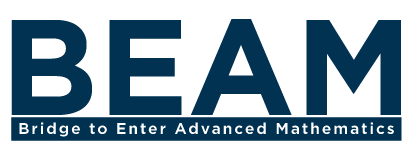What Are KenKen?
KenKen are puzzles somewhat like Sudoku. In an n-by-n KenKen, you must place the numbers 1 through n into the grid so that each row and each column has exactly one of each number in it. Additionally, the grid is divided into "cages" that have a mathematical operation and the value of applying that operation to the numbers in the cage (but the numbers can be plugged into the operation in any order). The numbers 1 through n must be inserted so that each cage comes out correctly.
You can see lots of examples here. (Although they're called "Inkies", presumably in order to avoid trademark infringement!)
How Are KenKen Valuable Mathematically?
Solving a KenKen requires strong deductive reasoning. The whole experience is essentially a sequence of placing numbers whose location you can deduce. It also requires experimentation with cases. Hence, proof by contradiction is embedded in the puzzles, because you will often conclude that a particular solution path is impossible. ("If I put a 3 here, then does it work or do I reach a contradiction?)
For example, the KenKen class might transition to solving this problem (from MATHCOUNTS 2010, Chapter Target Round #8):
How many ordered pairs of positive integers satisfy the equation \(\displaystyle \frac{1}{x} + \frac{1}{y} = \frac{1}{6}\) where \(x \lt y\)?
The analysis in this problem is very similar to KenKen, by systematically examining which numbers can work (and quickly ruling out other numbers). By drawing this distinction explicitly, students can see how to solve difficult problems.
KenKen have an additional benefit, which is that they reinforce basic arithmetic, especially using the prime factorization of a number to find all other factorizations. Although we appreciate this feature, it is not why we are so interested in using KenKen. A class should emphasize the logical reasoning and not the arithmetic!
How Might This Class Run?
Ultimately, the class is yours to run in whatever way you feel will best serves the students. Here is one potential timeline.
- 3 days: Introduce basics of KenKen. Students solve and deduce strategies, sharing their ideas with the class. Tricky concepts (see below) are covered explicitly as a group. Build up to more difficult puzzles.
- 2-3 days: Provide students with another logic-based puzzle (perhaps Slitherlink) where they can deduce solving strategies and translate the ideas of KenKen into a new environment. Unlike KenKen, do not go over the rules. Instead, give the students instructions they must figure out themselves. (Other logic classes have puzzles that are more language-intensive, emphasizing close reading; this is intended to make up for that difference.)
- 4-5 days (or however much time is left): Solve math problems that use deductive reasoning, case work, working methodically, and the idea of finding a contradiction to disprove an idea. Draw explicit parallels between these math problems and the methods used to solve logic puzzles previously.
Problems To Use
You can find numerous KenKen at this link. If you are submitting an application to teach this course, please use the first Ken-Ken at this link for your sample.
